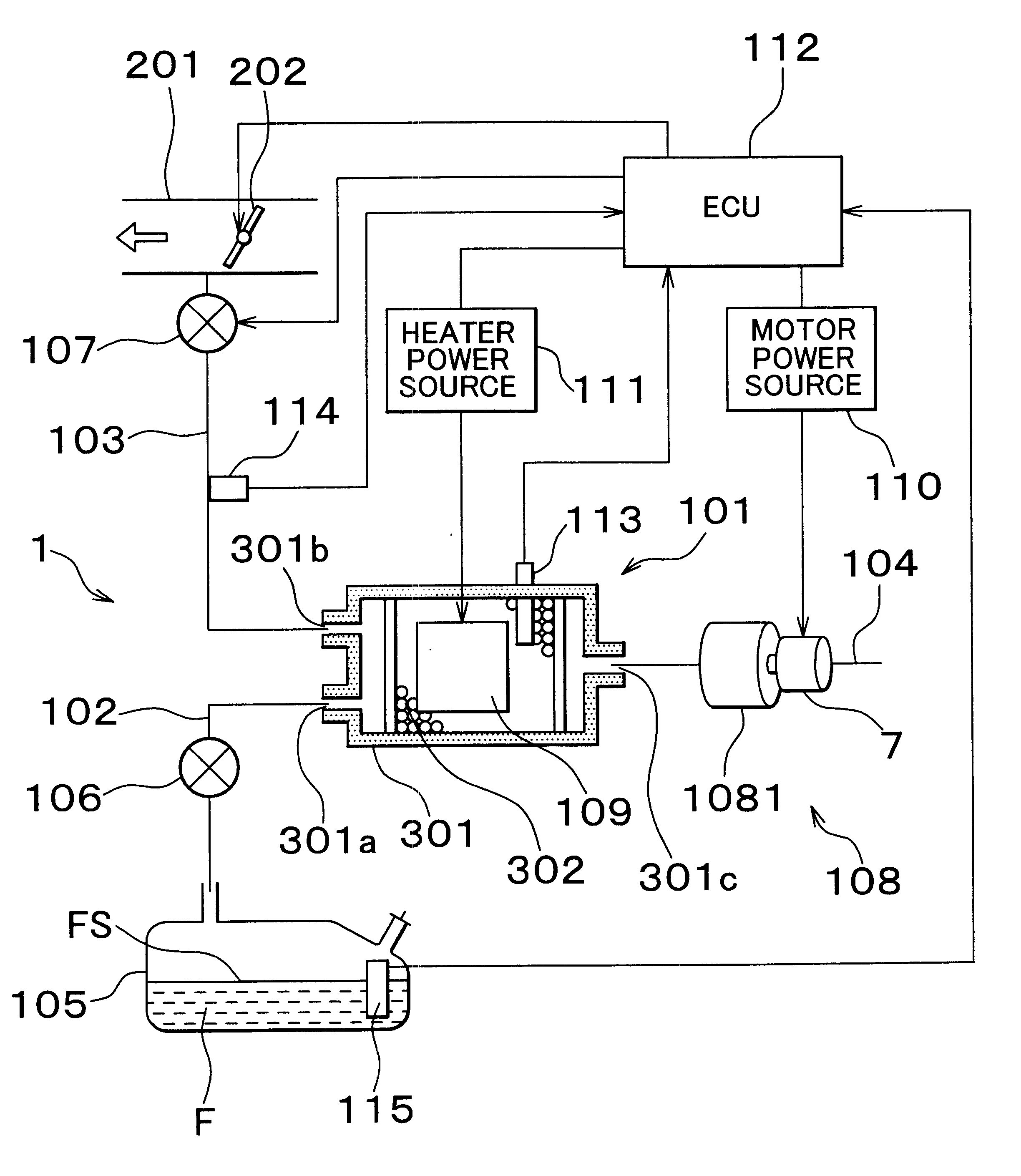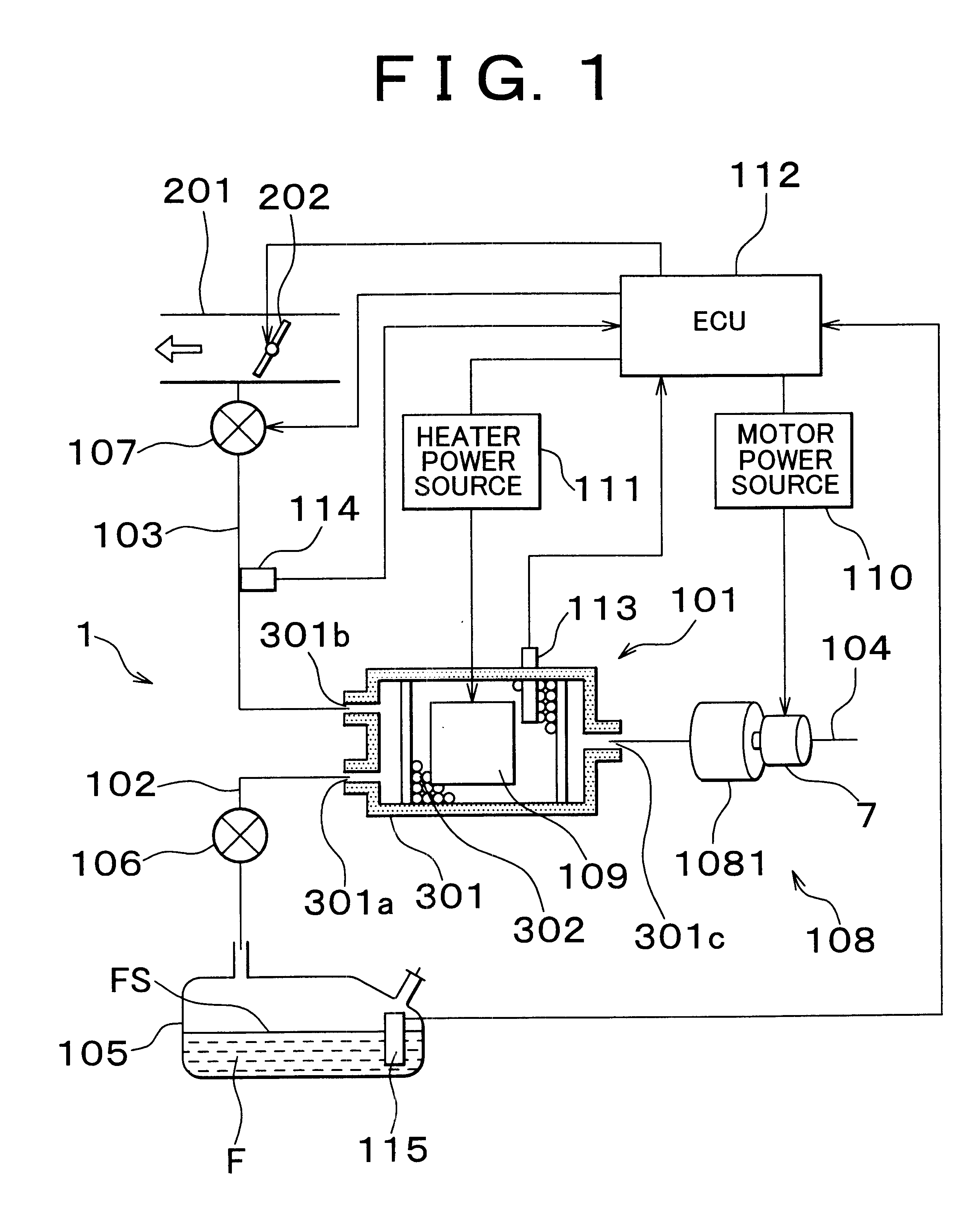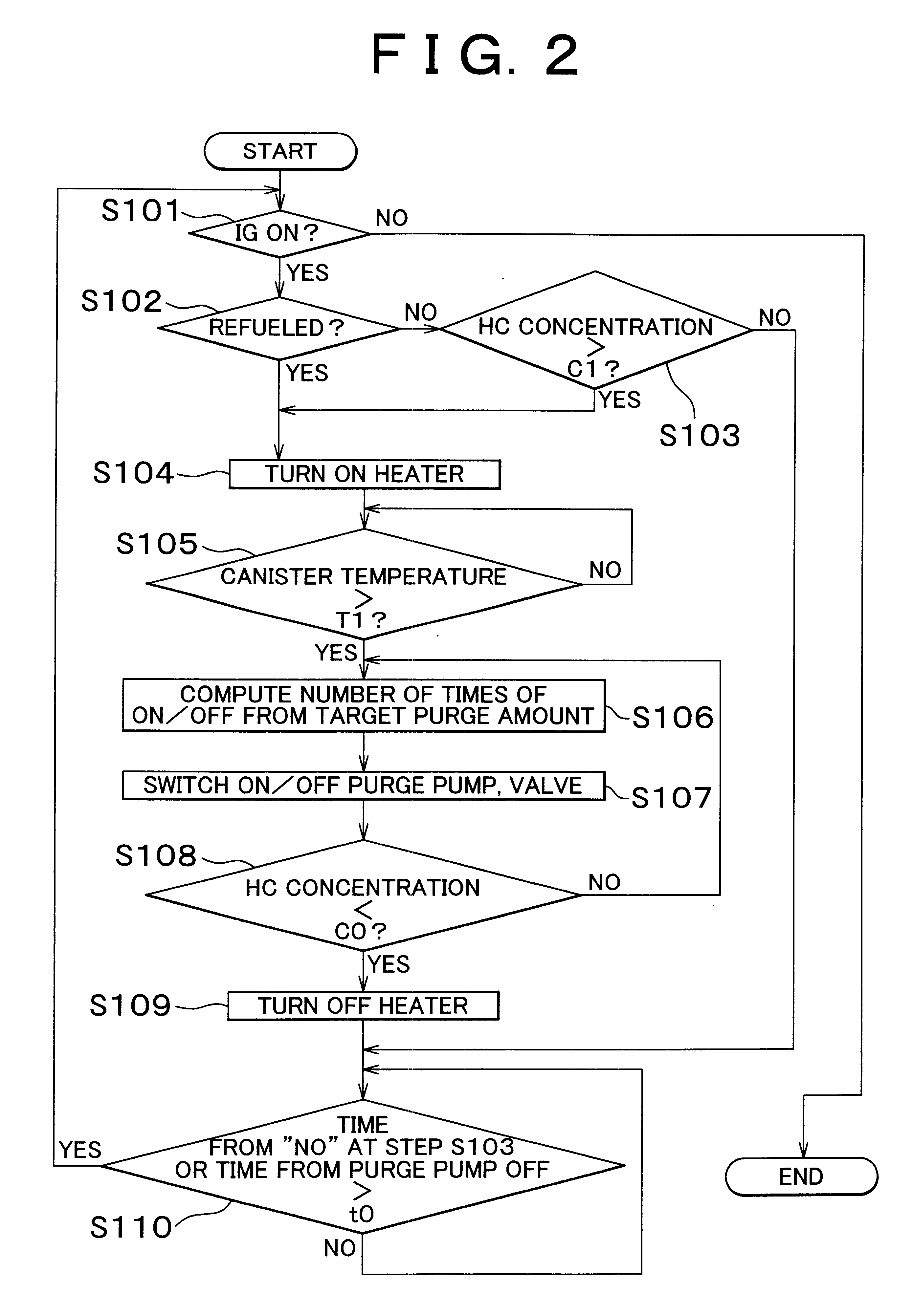Fuel vapor handling apparatus and diagnostic apparatus thereof
a technology of a diagnostic device and a fuel vapor handling device, which is applied in the direction of combustion-air/fuel-air treatment, machines/engines, and separation processes, etc., and can solve the problems of affecting the operation of the purge pump, the pressure increasing rate becomes less than the normal rate, and the practicality of the 30185
- Summary
- Abstract
- Description
- Claims
- Application Information
AI Technical Summary
Benefits of technology
Problems solved by technology
Method used
Image
Examples
second embodiment
FIG. 8 shows a fuel vapor handling apparatus in accordance with a second embodiment of the invention. The construction of the second embodiment is basically the same as that of the first embodiment. Features distinguishing the second embodiment from the first embodiment will mainly be described below.
In a fuel vapor handling apparatus 1A of this embodiment, a pump valve 116 that serves as a metering valve is provided in an atmospheric passage 104 immediately downstream of a purge pump 108. The pump valve 116 is an electromagnetic valve designed so that the degree of opening of the valve is variable. The degree of opening of the valve is adjusted based on a control signal from an ECU 112A.
FIG. 9 indicates a relationship between the ejection pressure of the purge pump 108 and the amount of flow ejected therefrom determined while the degree of opening of the pump valve 116 is changed. As the degree of valve opening is decreased, the ejection pressure increases and the amount of ejectio...
third embodiment
FIG. 10 shows a fuel vapor handling apparatus in accordance with a third embodiment of the invention. The construction of the third embodiment is basically the same as that of the first embodiment of the invention. Features distinguishing the third embodiment from the first embodiment will be mainly described below.
An ECU 112B of a fuel vapor handling apparatus 1 of this embodiment executes control programs different from those of the first embodiment. FIG. 11 shows a flow of a fuel vapor purge control executed by the ECU 112B. After the ignition switch is turned on (step S201), it is determined whether refueling is performed (step S202). If refueling is not performed, the process proceeds to step S203, in which an amount of purge flow that is uniquely determined by the degree of purge valve opening is input. Subsequently in step S204, the HC concentration determined by the HC concentration sensor 114 is input. Subsequently in step S205, an amount of purge fuel is computed based on ...
fourth embodiment
FIG. 12 shows a fuel vapor handling apparatus in accordance with a fourth embodiment of the invention. The construction of the fourth embodiment is basically the same as that of the second embodiment of the invention. Features distinguishing the fourth embodiment from the second embodiment will be mainly described below.
In an fuel vapor handling apparatus 1C of this embodiment, a fuel tank 105 is provided with a pressure sensor 117 for detecting the pressure inside the fuel tank 105 (hereinafter, referred to as "tank internal pressure sensor"). A detection signal from the sensor is input to an ECU 112C. The ECU 112C executes control programs different from those of the second embodiment. FIG. 13 shows a flow of a fuel vapor purge control executed by the ECU 112C. After the ignition switch is turned on (step S301), it is determined whether the amount of fuel remaining in the fuel tank 105 is greater than or equal to a predetermined amount V0 based on a detection signal from the level...
PUM
 Login to View More
Login to View More Abstract
Description
Claims
Application Information
 Login to View More
Login to View More - R&D
- Intellectual Property
- Life Sciences
- Materials
- Tech Scout
- Unparalleled Data Quality
- Higher Quality Content
- 60% Fewer Hallucinations
Browse by: Latest US Patents, China's latest patents, Technical Efficacy Thesaurus, Application Domain, Technology Topic, Popular Technical Reports.
© 2025 PatSnap. All rights reserved.Legal|Privacy policy|Modern Slavery Act Transparency Statement|Sitemap|About US| Contact US: help@patsnap.com



